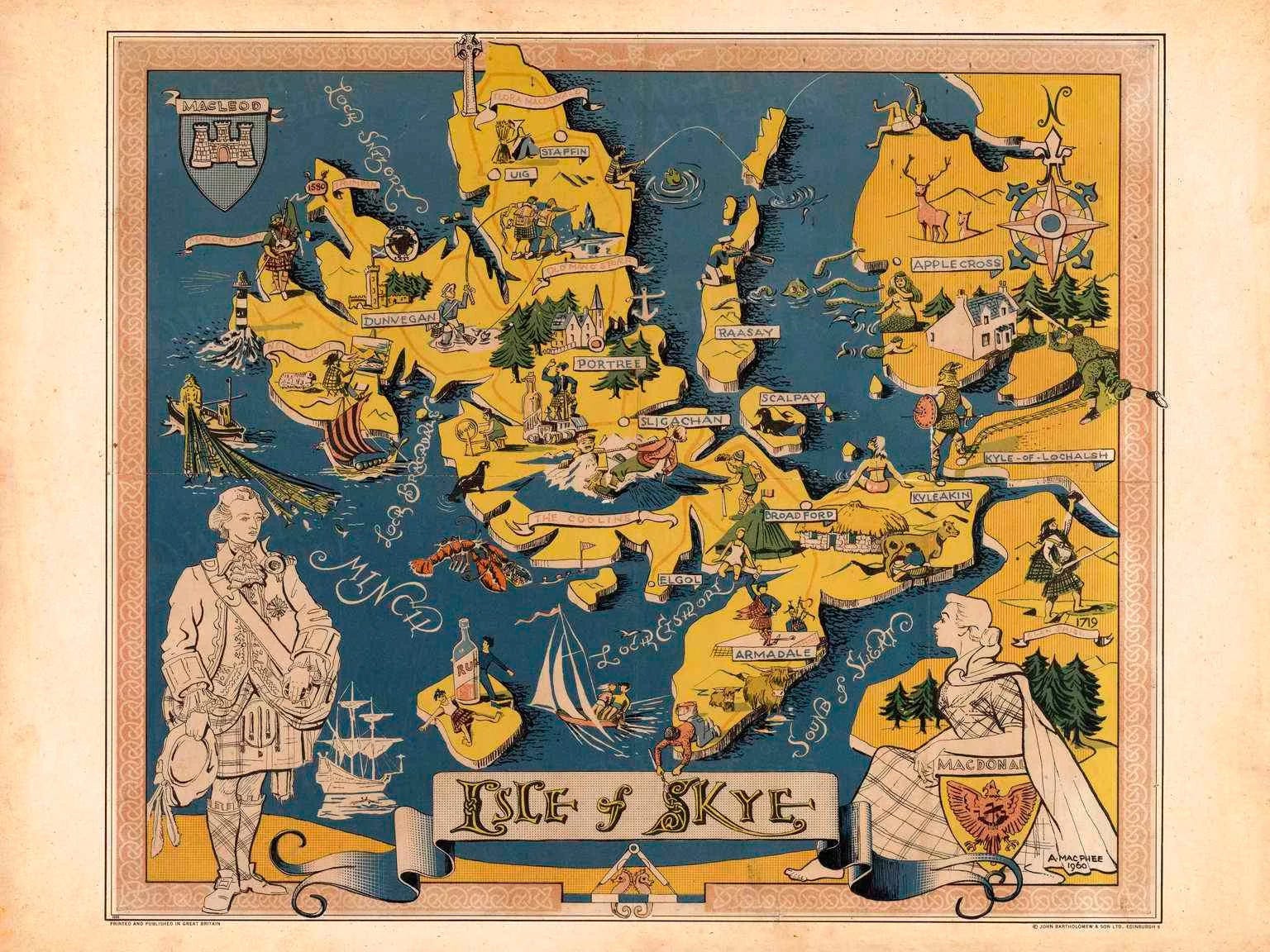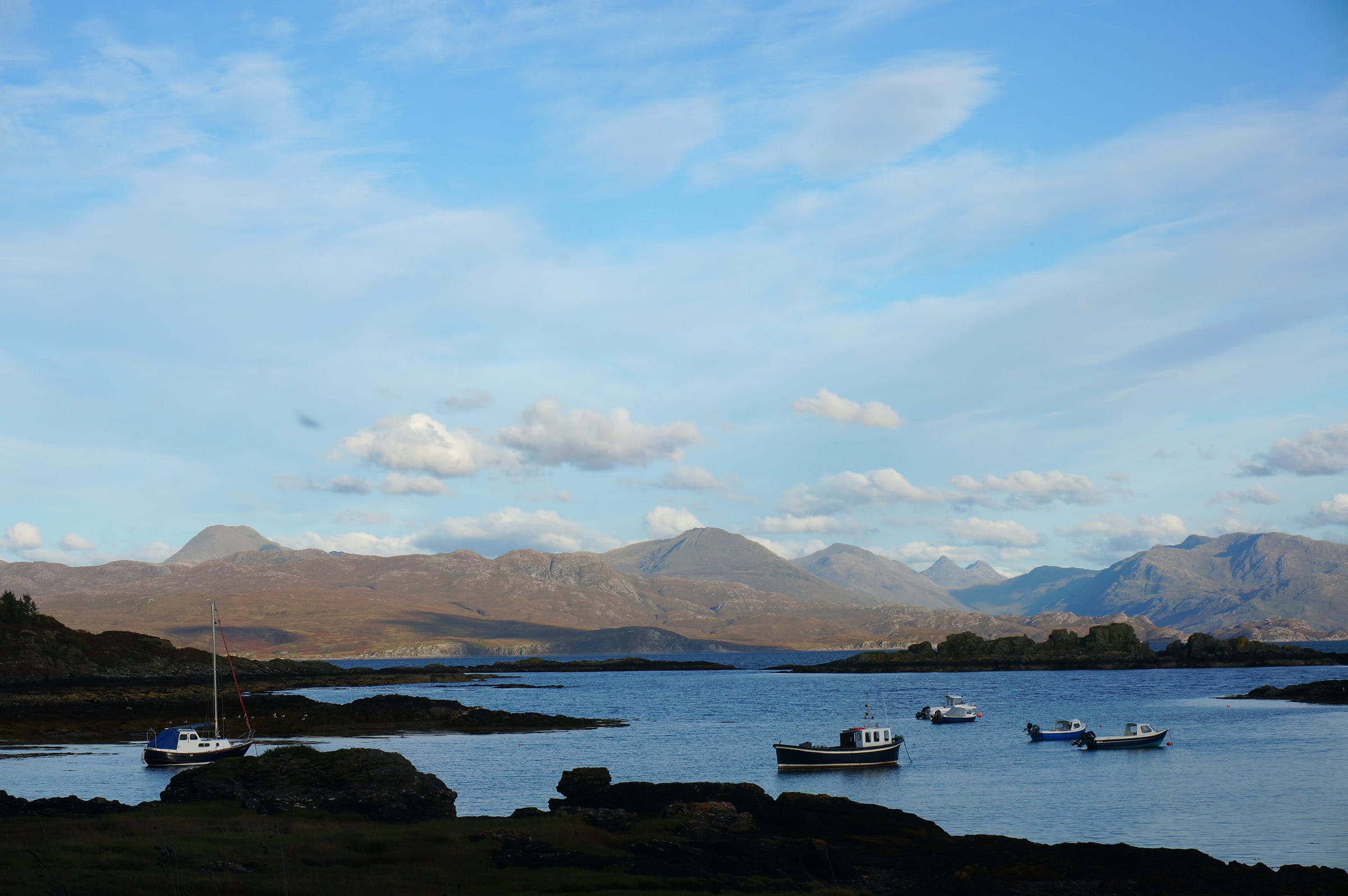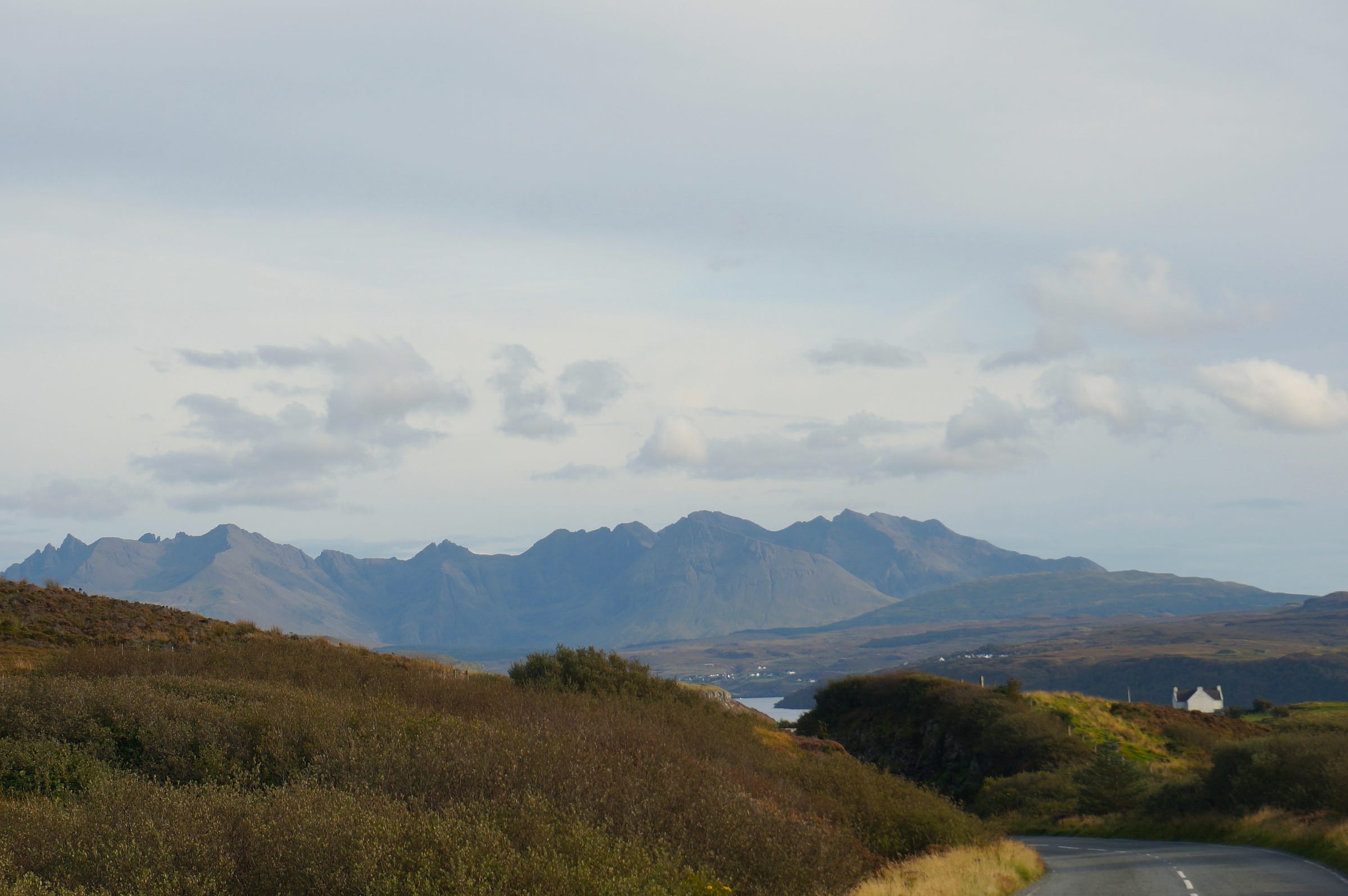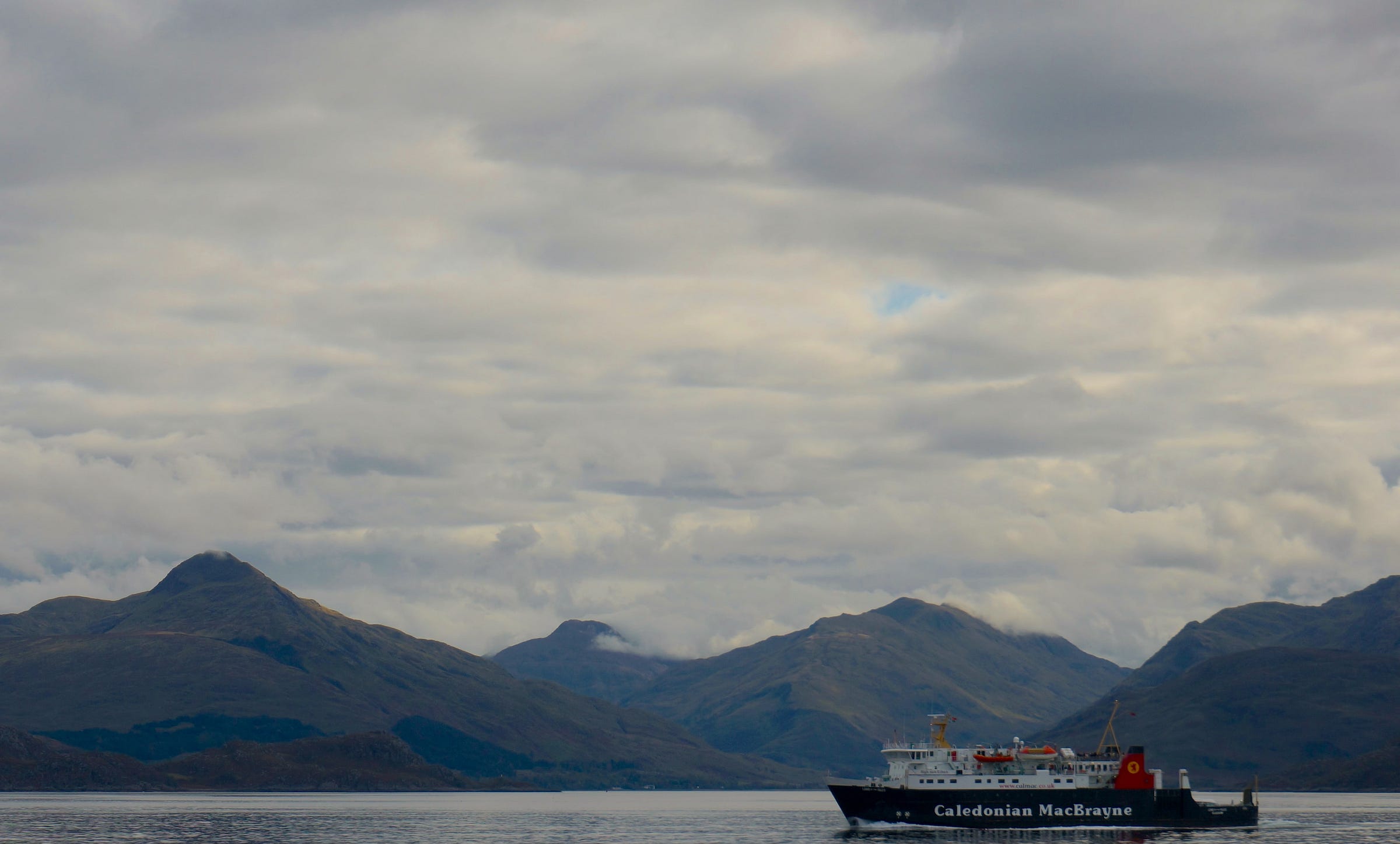Into the Wilds on the Isle of Skye
Battling clans, Bonnie Prince Charlie and still wild places on Scotland's most visited island
Returning to beloved destinations is a chancy business at best, but it felt like an especial risk with Skye, which I first visited when it could only be reached by ferry. Everything changed twenty years ago when the opening of the Skye bridge at Kyle of Lochalsh on Scotland’s West Coast provided an access all areas pass to every day tripping motorist.
Determined to find a romantic, old fashioned alternative to a four lane highway, we discover that the original sea crossing at Glenelg, the narrowest point between island and mainland is still operating and better yet that we can make the trip with our car on the ‘Glenachulish’ turntable ferry, the last of her kind operating anywhere in the world. It also happens to be the gateway to the remote southern parts of the Sound of Sleat, the least visited part of the island and one of the remaining strongholds of its Gaelic language and culture.
The morning we make our crossing is more than vile with dark clouds and drizzle, so we don’t have to wait long for our turn on the diminutive craft. The weather and road trip gods both seem to be on our side however, as the sun peeps through just as we are heading up the boat ramp on the island side. After a brief detour to view the picturesque ruins of Clan MacDonald’s former seat at Armadale Castle we head further south along the Sound of Sleat to begin our explorations with the magnificent loop from Ardvasar, where our B&B is located, through the crofting villages of Tarskavaig and Tokavaig (‘Bay of Cod fish’ and ‘Bay of Swells’ respectively, in the Gaelic tongue). Remarkably, we don’t see another soul en route and only a few contentedly grazing sheep interrupt the vistas of the isles of Eigg, Rhum and Canna across the bay and inland to the dramatic, sawtoothed silhouette of the Cuillin mountain range.
We are out early the next morning, (well as early as an enormous breakfast and an extremely talkative host will allow). We’ve been chatting away about his young daughters, who are being taught at the local school exclusively in Gaelic, and I am taken to task for my mispronunciation of the word. “We are not Irish!” he grumps. Ironically, he is an English transplant and I’m the one with some Scottish roots, but there is nothing like the zeal of the converted.
Heading up the East coast under lowering skies we pass the isles of Scalpay and Raasay whose serene calm contrast with Skye’s most visited scenic attraction, the Old Man of Storr, a dramatic pinnacle of basalt rock which is all that remains of a 2,800-million-year-old volcanic plug on the highest point of the spectacular Trotternish Ridge. At 10am it’s already seething with hikers, so we drive on to make the lonely walk to the ruins of Duntulm, which must surely be the Scottish Highlands most remote clifftop castle. A former seat of the chiefs of Clan MacDonald of Sleat and pivotal in their internecine rivalry with Clan Macleod, it stands dramatically on a basalt promontory. Legend has it that it was the castle’s many ghosts that drove the family to abandon it for nearby Monkstadt House in 1730.
Over coffee at the little port of Uig, where ferries crisscross The Minch to the Isles of Lewis and North Uist, Sabrina and I start to plan a future island hopping adventure, and if the suitcase had been in the car we might have begun it there and then. Bonnie Prince Charlie, on the run after his disastrous defeat by the English at the Battle of Culloden in 1746 effectively ended the Jacobite Rebellion, made landfall here from the island of Benbecula, in the Outer Hebrides, on his escape to France, a journey made by rowboat which is immortalised in the song ‘Over the sea to Skye’.
Our next stop is simultaneously the oldest continuously inhabited dwelling in the British Isles (the seat of Clan Macleod for the last eight centuries) and the largest pebble dash building I have ever seen. Dunvegan Castle sits imposingly in a gorgeous setting on its own loch and like The Castle of Mey outside Thurso, the eccentrically ramshackle former home of Elizabeth Bowes-Lyon (mother of Queen Elizabeth II), is a working family estate that just happens to welcome paying visitors.
Heading further south first towards and then around the Cuillin, which contains eleven ‘Munros’ (mountain peaks 3000 feet and higher which are obsessively ticked off by ‘Munro baggers’) and a further 16 summits, giving the mountain range a serrated profile, we find a seafood restaurant worthy of that view for an early supper. Sabrina knew immediately that we had to grab the very last table at The Claymore in Broadford, as it was full of Chinese (a sure sign of superlative seafood). Then just when we thought things couldn’t get any better, we had the sunset to end all sunsets.
We are leaving the island this morning for the mainland- once again by sea, but this time across the Sound of Sleat to Mallaig. As we cross we can see Britain’s last piece of true wilderness, the Knoydart Peninsular to the east and the isles of Rhum & Eigg to the west (future island hopping destinations for that trip we’ve started to plan).
There’s a lovely moment just as we are docking, when a wave sets off all the car alarms on board simultaneously and as we disembark I begin to wonder how I might persuade Sabrina to consider the two day wilderness hike into the Knoydart from Kinloughhorn, overnighting in a bothy. It’s a highly unlikely prospect, but you’ll be the first to know if I succeed!














What beautiful pictures of Skye!
Wow, such gorgeous photos!! And congratulations on making it into Substack Posts this week! Felicidades!